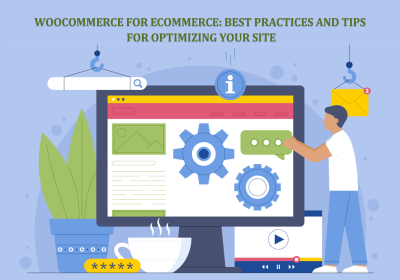
How OKR Revolutionizes Goal Setting in Modern Businesses
Introduction
Modern business is constantly evolving, and companies need to be agile and adaptable to compete. Organizations are constantly looking for frameworks to streamline their operations.
That’s where OKR enters the picture, a structured methodology that serves as a guiding compass for businesses navigating the complexities of today’s competitive landscape.
In this article, let’s explore the transformative impact of OKR on modern businesses, and how this framework revolutionizes setting and achieving goals.
Understanding OKR
Simply put, OKR, which stands for Objectives and Key Results, is like a GPS for businesses. It’s a smart system for setting goals and keeping everyone on the same page. The idea is to have clear and ambitious goals, called Objectives, and specific ways to measure success, called Key Results.
Think of Objectives as big goals for your team or company. These aren’t just dreams; they’re important targets that show where you want to go. Alongside Objectives, you have Key Results. They’re specific and measurable, helping you know if you’re on the right track.
There are three main key principles behind OKR: simplicity, focus, and agility. Keep things simple, so everyone understands. Focus means putting your energy into a few important things instead of spreading it thin. Agility is about being flexible and quick to adapt when things change.
Companies adopt the OKR framework because it helps their teams prioritize important tasks, keep track of progress, and boost overall productivity.
The Impact of OKR on Goal Setting
Achieving seamless alignment and transparency is a constant challenge in traditional goal-setting methods. However, the adoption of Objectives and Key Results (OKRs) proves transformative by establishing a clear line of sight from individual to organizational goals.
This cascading approach ensures each team member comprehends their role’s contribution to the larger mission, fostering purposeful collaboration and transparency.
In the ever-evolving business landscape, OKRs take center stage, particularly in promoting agility and adaptability. Through regular check-ins, progress tracking, and iterative adjustments, organizations equipped with OKRs can swiftly adapt to market shifts, seize emerging opportunities, and drive innovation and growth at an accelerated pace.
One major strength of OKRs lies in their outcome-centric focus, steering teams away from mere output. This inspires individuals to push boundaries, experiment with novel approaches, and perpetually learn from both successes and failures. This learning-driven environment cultivates a culture of continuous improvement, encouraging calculated risks, challenging the status quo, and fostering innovation across the organization.
OKRs not only set ambitious targets but also ensure goals remain attainable, striking a balance that promotes accountability and empowerment. By defining clear responsibilities and outcomes, OKRs stimulate ownership, motivating individuals to contribute meaningfully to team objectives. This sense of empowerment fuels employee engagement and, in turn, drives high-performance outcomes.
Revolutionizing performance management, OKRs offer a dynamic and data-driven approach. Through clear objectives and measurable key results, managers can objectively assess progress, provide timely feedback, and make informed decisions about resource allocation.
This data-centric approach not only enhances performance conversations but also fosters transparency and fairness, creating a culture that propels organizations toward success.
Implementing OKR in Modern Businesses
Effectively incorporating OKRs into your company’s framework is a strategic move that can significantly enhance business growth and performance. Here are the steps to follow for OKR implementation:
1. Define the Company’s Mission and Objectives
Understanding your company’s vision is the first step. Delve into the ultimate purpose and long-term goals of your organization. Envision the impact you aim to make in your industry and identify the unique value proposition for your customers. With this clarity, you can set strategic objectives that are ambitious and focused and directly contribute to the realization of your overarching vision.
2. Set OKRs for Each Organization Level
Begin at the top with company-level OKRs aligned with your overall strategic direction. These OKRs should reflect your organization’s vision, mission, and key growth areas. As you disperse these objectives across the business, each department should tailor its OKRs to align with the company’s overall objectives, with specific outcomes and metrics to measure success.
3. Track and Monitor Progress
Setting clear and measurable Key Results (KRs) is essential. Your KRs need to be SMART – or Specific, Measurable, Achievable, Relevant, and Time-bound. Regular check-ins, held at a frequency that suits your business rhythm, provide opportunities to assess progress, discuss challenges, and make informed adjustments.
4. Evaluate and Adjust OKRs
Based on the monitoring and variance analysis, periodically evaluate the effectiveness of your OKRs. This includes assessing their alignment with the company’s vision and strategic direction. Be attentive to external and internal factors that may necessitate adjustments.
5. Foster a Culture of Collaboration, Accountability, and Transparency
Collaboration in OKR development is vital. Encourage cross-functional collaboration in setting ambitious yet achievable objectives. Establish clear accountability by defining roles and responsibilities, assigning OKR champions, and regularly reviewing progress.
Promote transparency by communicating the company’s vision and encouraging open discussions about proposed OKRs. Facilitate ongoing communication and feedback loops, creating a culture that values constructive debates and celebrates achievements.
If you want to see it in action, check out these OKR examples.
Tools and Technologies for OKR Management
There are several OKR management software and tools available, but the top 3 include:
Profit.co
Profit OKR is a dynamic performance management software solution for businesses navigating today’s fast-paced industry. It prioritizes goals, saves time, engages employees, and executes strategies effectively. It helps foster effective leadership and a high-performance culture.
Monday.com
Monday.com is a versatile digital workspace that automates tasks and keeps teams on track. With specialized tools, it streamlines workflows for project management or sales, trusted by over 180,000 global customers.
Peoplebox
Peoplebox unifies strategy execution and performance management for high-growth organizations. Integrating OKRs, performance reviews, and employee engagement, aligns in real-time with various work tools, empowering companies to efficiently achieve goals and build a high-performance culture.
Let OKR Transform Your Business
OKRs are pivotal for businesses seeking growth and performance excellence in today’s dynamic landscape. With tools like Profit OKR and OKR certifications, organizations can navigate the complexities of goal-setting, fostering collaboration, transparency, and a culture of continuous improvement.
As businesses strive for success, the adoption of effective OKR management tools becomes a strategic imperative, aligning teams, streamlining workflows, and propelling them toward their overarching objectives.
Author Bio:

Asha A, Senior Content Writer, Profit.co
In her current role as a Senior Content Writer, she seamlessly merges creativity with strategy, crafting compelling narratives that resonate and drive engagement. With a rich background in content marketing, she has refined her skills to produce insightful pieces that not only captivate audiences but also amplify brands, going beyond traditional storytelling and product marketing.






